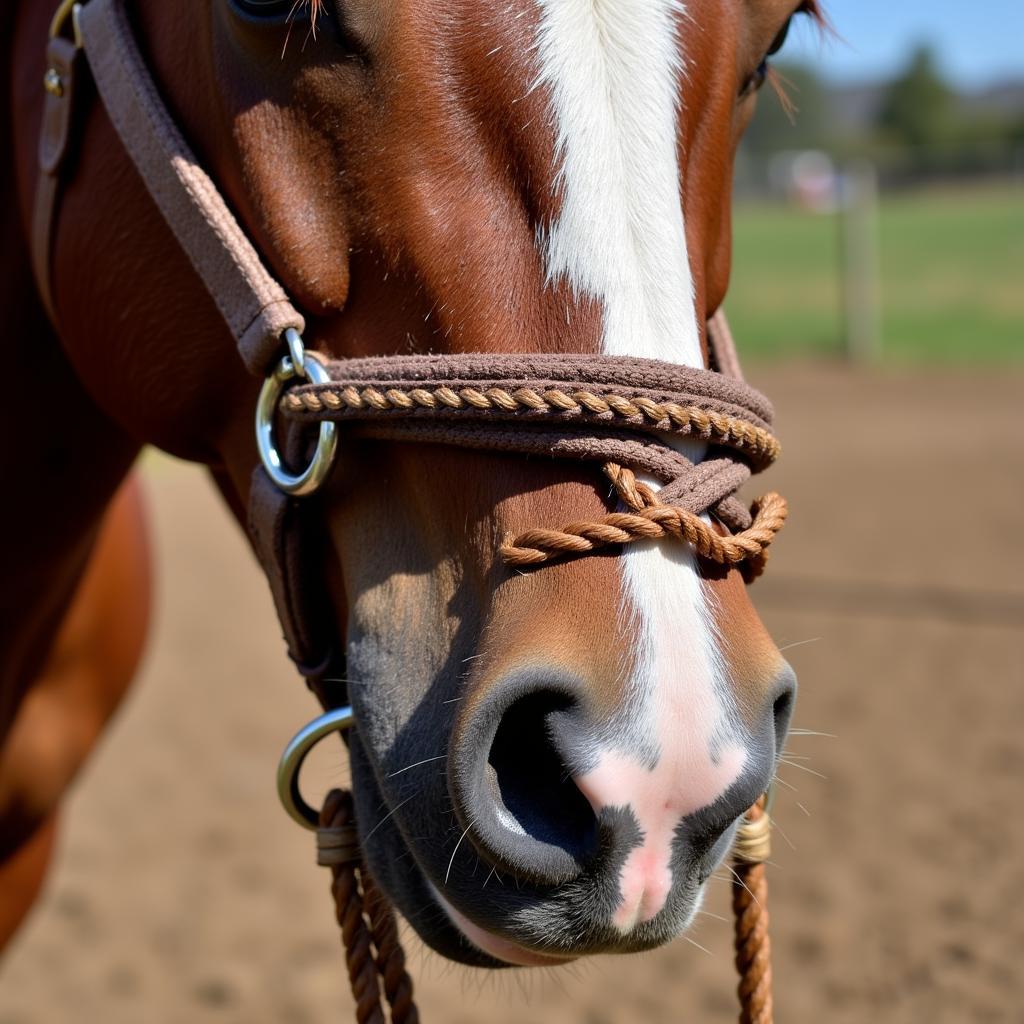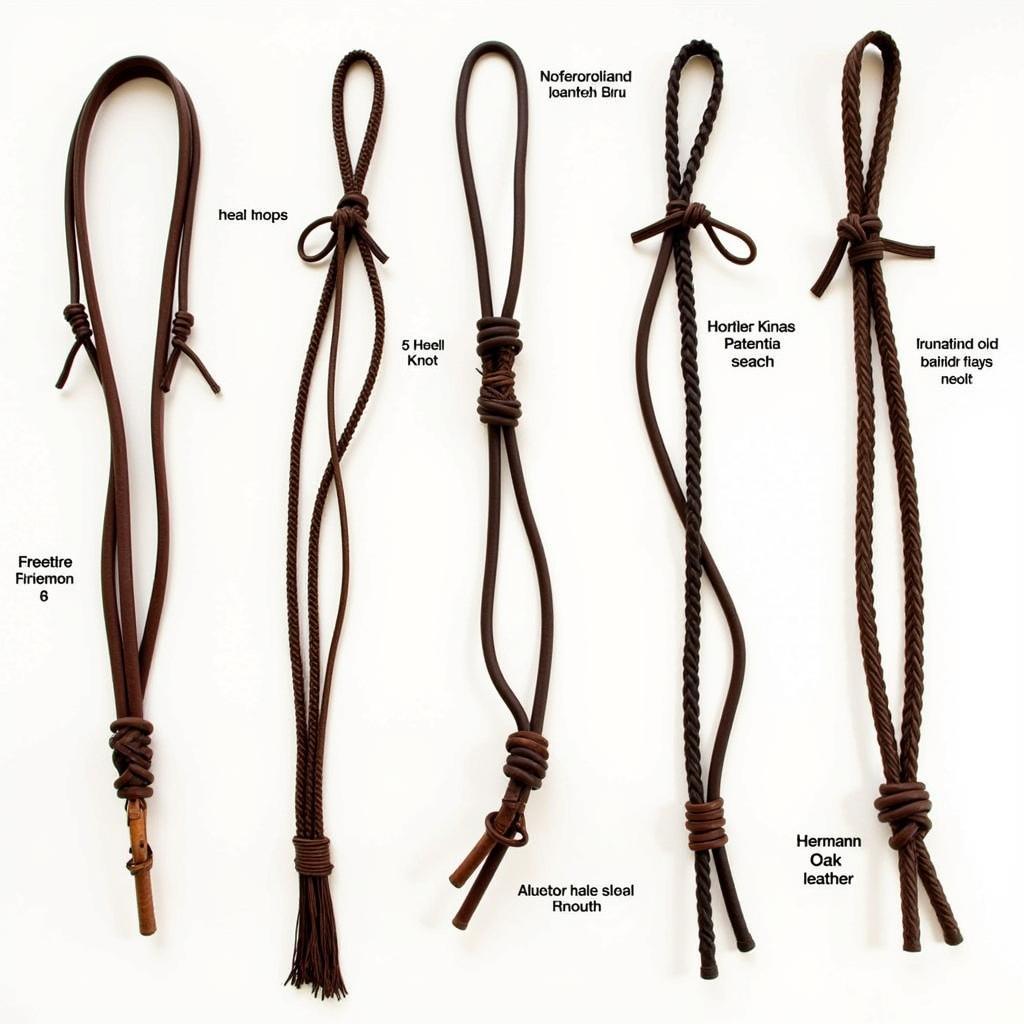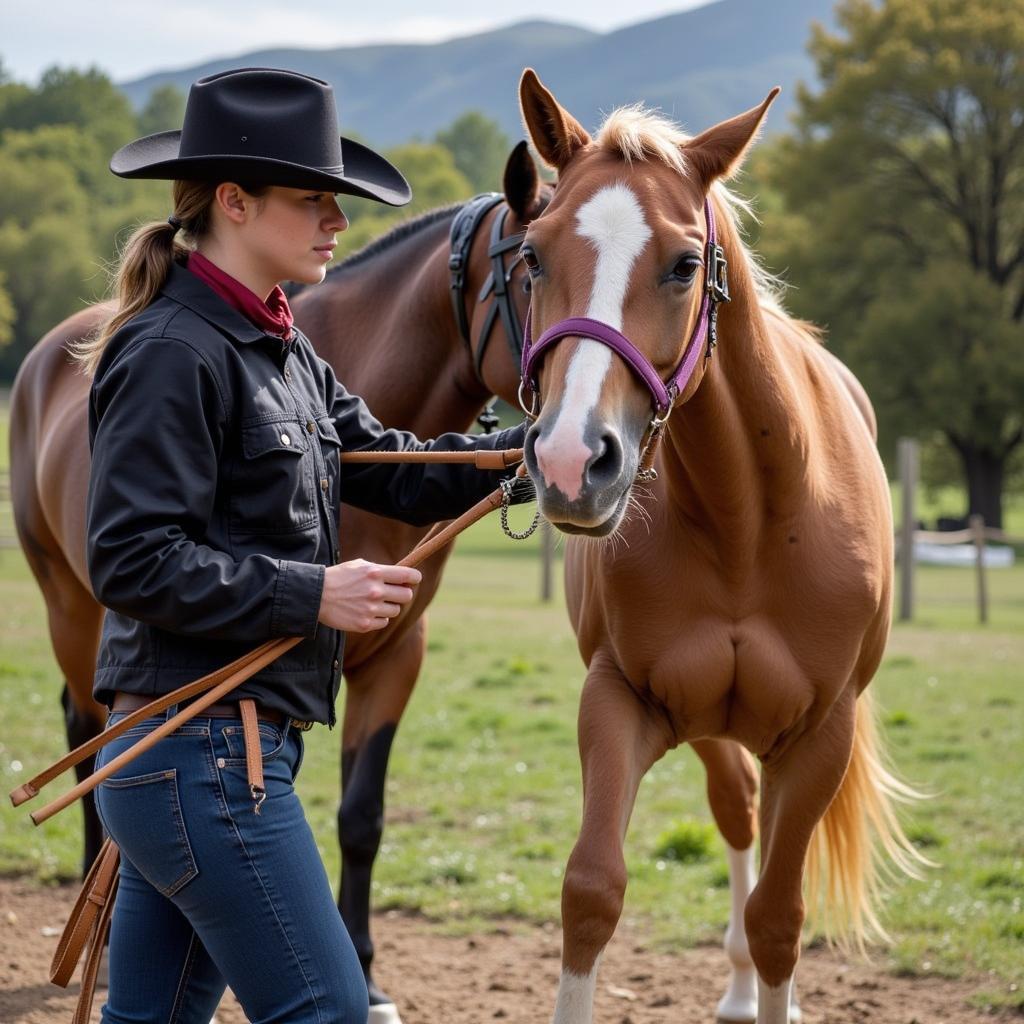The Bosal Horse Bridle, a key piece of equipment in the vaquero tradition of horsemanship, offers a unique approach to communication and control. Unlike traditional bridles that rely on a bit, the bosal works off pressure points on the horse’s nose and jaw. Let’s delve into the intricacies of this intriguing piece of tack.
What is a Bosal Horse Bridle?
A bosal is a type of bridle that utilizes a braided rawhide noseband, often made of kangaroo or Hermann Oak leather. It’s a crucial component of the hackamore, a bitless bridle used extensively in the California vaquero tradition. The bosal’s design and application require a nuanced understanding of horse behavior and pressure-release techniques. Its effectiveness lies in the rider’s ability to communicate clearly and subtly with the horse, using precise signals and releases of pressure.
Choosing the right bosal is essential for effective communication. A properly fitted bosal should rest comfortably on the horse’s nose, about halfway between the nostrils and the eyes. It shouldn’t be too tight or too loose, allowing for clear signals without causing discomfort or pain. A horse bosal set often includes the bosal, headstall, mecate reins, and sometimes a fiador.
 Close-up view of a bosal horse bridle
Close-up view of a bosal horse bridle
Benefits of Using a Bosal
Many horse owners are turning to the bosal for its bitless design, believing it offers a gentler approach to communication. This can be particularly beneficial for horses with sensitive mouths or those that have experienced discomfort with traditional bits. The bosal encourages the horse to respond to lighter cues, promoting a more refined and responsive riding experience. A bosal helps develop a soft feel and responsiveness in the horse, creating a deeper connection between horse and rider.
Furthermore, the bosal’s use encourages riders to refine their communication skills. The subtlety of the bosal requires riders to be precise with their cues, fostering a deeper understanding of horse behavior and body language. This can lead to a more harmonious and responsive partnership between horse and rider.
Different Types of Bosals
Bosals come in various shapes and sizes, each designed for specific purposes and horse conformations. The diameter of the bosal’s noseband, known as the heel knot, determines the level of pressure and thus, the horse’s responsiveness. Smaller heel knots provide more focused pressure, while larger ones distribute pressure over a wider area. It’s crucial to select the appropriate bosal based on the horse’s training level and individual needs. A horse new to a bosal would benefit from a larger, softer bosal, while a more experienced horse might respond well to a smaller, firmer one.
Just as there are different types of bridle for a horse, bosals vary too. Some are made of braided rawhide, while others are made of kangaroo hide or even Hermann Oak leather. The material and braiding style can affect the bosal’s stiffness and how it conforms to the horse’s nose.
 Various bosal types for horses
Various bosal types for horses
How to Properly Fit a Bosal Horse Bridle
Fitting a bosal correctly is crucial for both the horse’s comfort and the rider’s effectiveness. The bosal should rest on the horse’s nose, about halfway between the nostrils and the eyes. It shouldn’t be so tight that it restricts breathing or causes discomfort, nor should it be so loose that it slides around or delivers unclear signals. The mecate rein, attached to the heel knot, provides the means of communication, allowing the rider to apply and release pressure as needed.
Before using a bosal, ensure you understand its mechanics and the principles of pressure and release. Improper use can lead to confusion and discomfort for the horse. Consider working with an experienced vaquero horseman who can guide you through the process of fitting and using a bosal effectively. You may want to compare it with other options like a headsetter for horses.
Training with a Bosal Horse Bridle
Training with a bosal is a gradual process that requires patience, consistency, and a deep understanding of horse behavior. Starting with groundwork exercises is essential to accustom the horse to the feel and pressure of the bosal. As the horse progresses, the training can be extended to ridden work, focusing on clear communication and consistent release of pressure. The goal is to develop a light and responsive horse that understands and responds willingly to subtle cues. For contrast, it can be beneficial to consider the impact of bits and explore discussions on bit horse abuse.
“A bosal is not about force, it’s about feel and finesse,” says renowned horse trainer, Maria Sanchez. “It’s a tool that encourages a deeper connection and understanding between horse and rider.”
 Horse undergoing bosal training
Horse undergoing bosal training
Bosal vs. Traditional Bridles: Making the Right Choice
While both bosals and traditional bridles serve the purpose of controlling and communicating with a horse, they achieve this through different mechanisms. Traditional bridles utilize a bit that sits in the horse’s mouth, applying pressure to the bars, tongue, and palate. Bosals, on the other hand, rely on pressure points on the horse’s nose and jaw. The choice between a bosal and a traditional bridle depends on various factors, including the horse’s individual needs, the rider’s experience, and the desired riding discipline. Another option to consider is the war bridle for horses.
Conclusion
The bosal horse bridle offers a unique and rewarding approach to horsemanship. Its bitless design and emphasis on pressure and release can foster a deeper connection and understanding between horse and rider. By understanding the nuances of the bosal and its proper application, riders can unlock a more refined and responsive riding experience, benefiting both horse and rider. Remember, choosing the right equipment, like a bosal, is crucial for the well-being and performance of your horse.
Need help with horse equipment? Contact us at Phone: 0772127271, Email: [email protected] or visit us at QGM2+WX2, Vị Trung, Vị Thuỷ, Hậu Giang, Vietnam. We have a 24/7 customer service team.